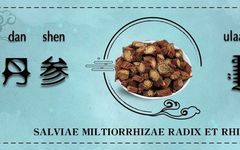
Click the above “blue words” to follow us!
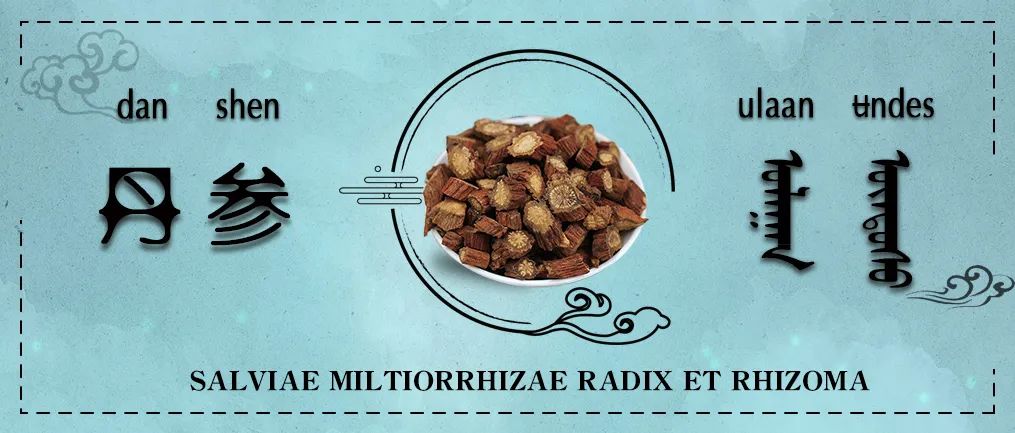
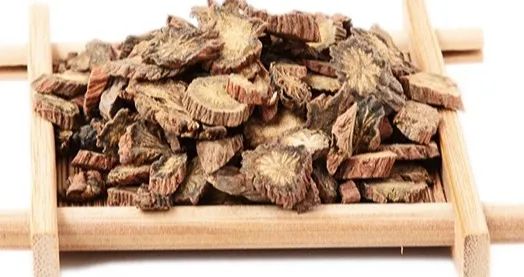
Dan Shen
dan shen

Dan Shen, the dried root and rhizome of the Lamiaceae plant Salvia miltiorrhiza Bge., is harvested in spring and autumn, cleaned of soil, and dried. It is primarily used to treat angina pectoris, irregular menstruation, dysmenorrhea, amenorrhea, excessive bleeding, abdominal masses, blood stasis abdominal pain, joint pain, palpitations, insomnia, and carbuncles.

01
Plant Description
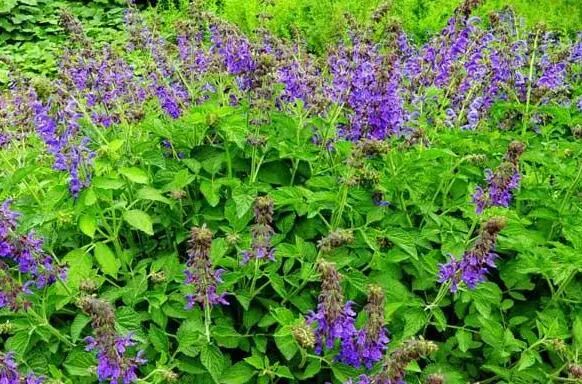
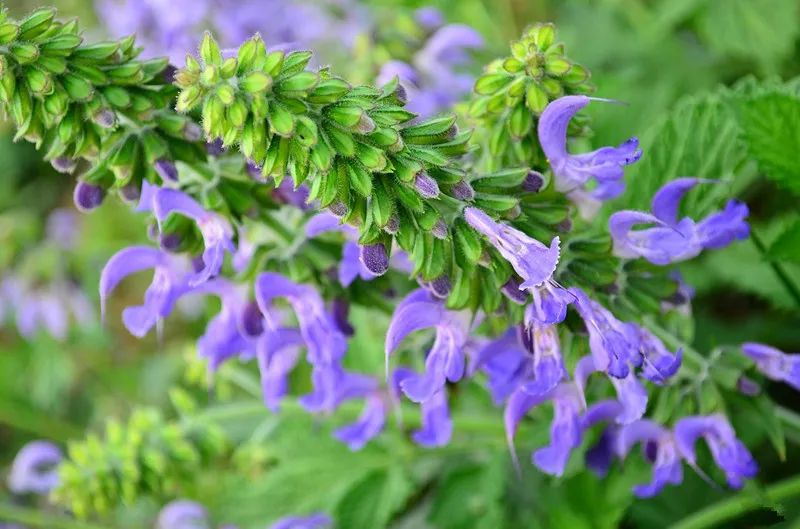
Perennial erect herb; the root is thick, fleshy, red on the outside, white on the inside, 5-15 cm long, and 4-14 mm in diameter, with sparse fibrous roots. The stem is erect, 40-80 cm tall, four-angled, with grooves, densely covered with long soft hairs, and highly branched. The leaves are usually odd-pinnate compound leaves, with petioles 1.3-7.5 cm long, densely covered with long soft hairs below. Leaflets are 3-5(7), 1.5-8 cm long, 1-4 cm wide, oval or elliptical, with sharp or gradually pointed tips, rounded or oblique bases, and serrated edges, with soft hairs on both sides, denser below. The inflorescence is a cyme with 6 or more flowers, the lower ones are sparse, and the upper ones are dense, forming a long 4.5-17 cm terminal or axillary raceme; bracts are lanceolate, pointed at the tip, wedge-shaped at the base, entire, glabrous above, slightly hairy below, longer or shorter than the pedicel; pedicels are 3-4 mm long, and the inflorescence axis is densely covered with long soft hairs or glandular hairs. The calyx is bell-shaped, purple, about 1.1 cm long, slightly enlarged after flowering, with sparse long soft hairs and glandular hairs outside, with marginal hairs, and densely covered with white long stiff hairs in the middle inside, with 11 veins, bilabiate, the upper lip entire, triangular, about 4 mm long, 8 mm wide, with 3 small tips at the apex, and narrow wings on the outer edge of the lateral veins, the lower lip nearly equal in length to the upper lip, deeply divided into 2 lobes, the lobes triangular and gradually pointed. The corolla is purple-blue, 2-2.7 cm long, with glandular short soft hairs outside, especially dense on the upper lip, with a ring of slightly sparse short soft hairs about 2-3 mm from the base of the corolla tube, the corolla tube extending outward, shorter than the corolla limb, with a base width of 2 mm, gradually widening to 8 mm at the throat, the corolla limb bilabiate, the upper lip 12-15 mm long, sickle-shaped, erect, slightly notched at the tip, the lower lip shorter than the upper lip, 3-lobed, the middle lobe 5 mm long, 10 mm wide, with irregularly pointed lobes, the side lobes short and rounded, about 3 mm wide. There are 2 fertile stamens extending to the upper lip, the filaments are 3.5-4 mm long, the anther connective is 17-20 mm long, slightly hairy at the joint in the middle, the upper arm is very elongated, 14-17 mm long, the lower arm is short and thick, the anther chambers are sterile, fused at the tip. The degenerate stamens are linear, about 4 mm long. The style extends far out, up to 40 mm long, with unequal 2 lobes at the tip, the posterior lobe very short, the anterior lobe linear. The flower disc is slightly swollen at the front. The small nut is black, oval, about 3.2 cm long, 1.5 mm in diameter. The flowering period is from April to August, with fruit appearing after flowering.
Produced in Hebei, Shanxi, Shaanxi, Shandong, Henan, Jiangsu, Zhejiang, Anhui, Jiangxi, and Hunan; grows on hillsides, under forest grass, or by streams, at an altitude of 120-1300 meters.
Roots are used in medicine, containing tanshinone, which is a strong tonic and menstrual regulator, with effects of promoting blood circulation, generating new blood, and regulating menstruation, making it an essential herb in gynecology, primarily treating uterine bleeding, irregular menstruation, blood stasis, abdominal pain, dysmenorrhea, and hernia pain. It has good effects in treating coronary heart disease. Additionally, it is used for treating neurasthenia, insomnia, joint pain, anemia, mastitis, lymphadenitis, arthritis, carbuncles, erysipelas, acute and chronic hepatitis, pyelonephritis, traumatic injuries, late-stage schistosomiasis with liver and spleen enlargement, and epilepsy. Externally, it can also be used to wash sores.
It can be divided into two varieties: the original variety f. miltiorrhiza and the white flower variety f. alba C. Y. Wu et H. W. Li in Addenda 582. The latter differs from the former in having white flowers and is produced in Shandong, with the type specimen collected from Zhangqiao, Shandong.

02
Medicinal Material
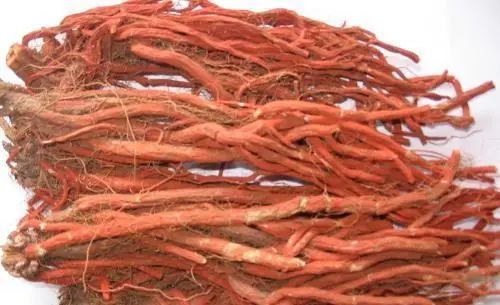
[Alias] Yi Shen, Mu Yang Ru (“Wu Pu Ben Cao”), Zhu Ma (Tao Hongjing), Shan Shen (“Ri Hua Zi Ben Cao”), Zi Dan Shen (“Modern Practical Chinese Medicine”), Hong Gen (“Chinese Medicinal Plant Records”), Zi Dang Shen (“Nanjing Folk Herbal Medicine”), Shan Hong Luo Bo (“Zhejiang Chinese Medicine Handbook”), Huo Xue Gen, Kao Shan Hong, Hong Shen (“Jiangsu Plant Medicine Records”), Shao Jiu Hu Gen, Ye Su Zi Gen, Shan Su Zi Gen (“Northeast Medicinal Plant Records”), Da Hong Pao (“Hebei Medicinal Materials”), Mi Guo Tou, Xue Shen Gen, Duo Duo Hua Gen (“Shandong Chinese Medicine”), Feng Tang Guo (“Shaanxi Chinese Medicine Records”).
[Source] The root of the Lamiaceae plant Dan Shen. It can be harvested from early November to early March of the following year, with early November being the most suitable time. The roots are dug up, cleaned of soil and roots, and dried.
[Characteristics] The product has short and thick rhizomes, sometimes with remnants of the stem base. The roots are cylindrical, slightly curved, with several branches and fibrous roots, 10-20 cm long, and 0.3-1 cm in diameter. The surface is reddish-brown or dark brown, rough, with longitudinal wrinkles. The outer skin of old roots is loose, often showing purple-brown, and often peeling in scales. The texture is hard and brittle, with a loose fracture surface, which may have cracks or be slightly smooth and dense, with the bark being reddish-brown, the wood being gray-yellow or purple-brown, and the vascular bundles being yellow-white, arranged radially. The aroma is faint, and the taste is slightly bitter and astringent.
Cultivated products are thicker, with a diameter of 0.5-1.5 cm. The surface is reddish-brown, with longitudinal wrinkles, and the outer skin is tightly attached and not easily peeled off. The texture is solid, with a relatively smooth fracture surface, slightly keratinous.
[Identification] (1) The powder of this product is reddish-brown. Stone cells are round, triangular, rectangular, or irregular, some elongated into fibrous shapes, with uneven edges, diameters of 14-70 μm, and lengths up to 257 μm, with obvious pores, some containing yellow-brown substances. Wood fibers are mostly fiber vessels, elongated spindle-shaped, with pointed or blunt ends, diameters of 12-27 μm, with bordered pit pores, and the pores are oblique fissures or cross-shaped, sparsely distributed. Reticulate vessels and bordered pit vessels have diameters of 11-60 μm.
(2) Take 1 g of the powder of this product, add 5 ml of ethanol, ultrasonic treatment for 15 minutes, centrifuge, and take the supernatant as the test solution. Take 1 g of Dan Shen as a control medicinal material, prepare the control medicinal material solution in the same way. Then take tanshinone II A and salvianolic acid B reference substances, prepare a mixed solution containing 0.5 mg and 1.5 mg in 1 ml of ethanol, respectively, as reference solution. Perform thin-layer chromatography, applying 5 μl of each of the three solutions on the same silica gel G thin-layer plate, making them into strips, using chloroform-methanol-ethyl acetate-methanol-formic acid (6:4:8:1:4) as the developing agent, developing to about 4 cm, removing, drying, and then using petroleum ether (60-90℃)-ethyl acetate (4:1) as the developing agent, developing to about 8 cm, removing, drying, and inspecting under sunlight and ultraviolet light (365 nm). In the test solution, corresponding to the positions of the control medicinal material and reference substance, the same colored spots or fluorescent spots should appear.
[Examination] Moisture must not exceed 13.0%.
Total ash must not exceed 10.0%.
Acid-insoluble ash must not exceed 3.0%.
Heavy metals and harmful elements are determined according to the methods for lead, cadmium, arsenic, mercury, and copper, with lead not exceeding 5 mg/kg; cadmium not exceeding 1 mg/kg; arsenic not exceeding 2 mg/kg; mercury not exceeding 0.2 mg/kg; copper not exceeding 20 mg/kg.
[Extractives] Water-soluble extractives must not be less than 35.0% according to the cold infusion method under the water-soluble extractives determination method.
Alcohol-soluble extractives must not be less than 15.0% according to the hot infusion method under the alcohol-soluble extractives determination method, using ethanol as the solvent.
[Chemical Components] Contains tanshinone I, II A, II B, isosalvianolic acid I, II A, hidden tanshinone, isohidden tanshinone, methyl tanshinone, and hydroxy tanshinone, etc.
[Processing] Remove impurities, remove rhizomes, wash, soak, slice, and dry. Stir-fried Dan Shen: Take Dan Shen slices and stir-fry in a pot over low heat until slightly charred, then remove and cool.
[Taste and Properties] Bitter, slightly warm.
[Meridians Entered] Enters the Heart and Liver meridians.
[Functions and Indications] Activates blood circulation and removes stasis, calms the mind, expels pus, and relieves pain. Treats angina pectoris, irregular menstruation, dysmenorrhea, amenorrhea, excessive bleeding, abdominal masses, blood stasis abdominal pain, joint pain, palpitations, insomnia, and carbuncles.
[Dosage and Administration] For internal use: decoction, 1.5-3 qian; or in pills or powders. For external use: decocted into a paste for application, or decocted for washing.
[Formulas] (1) For treating women’s menstrual irregularities, whether early or late, or excessive or insufficient, for prenatal fetal instability, and postpartum blood not flowing: Dan Shen (remove the reed) in any amount, powdered. Take 2 qian each time, mix with wine, and take before meals for menstrual irregularities and cold labor at any time. (“Women’s Good Formula” Dan Shen Powder)
(2) For treating menstrual irregularities: 1 jin of purple Dan Shen, cut into thin slices, dry in the sun until crisp, grind into fine powder, and form into pills with good wine. Take 3 qian each time, with warm water in the morning. (“Collection of Verified Excellent Formulas” Regulating Menstruation Pills)
(3) For treating scanty menstrual blood and postpartum blood stasis abdominal pain, amenorrhea abdominal pain: Dan Shen, Yi Mu Cao, and Xiang Fu each 3 qian. Decoction for oral administration.
(4) For treating abdominal masses: Dan Shen, San Ling, and E Zhu each 3 qian, and Zao Jiao Ci 1 qian. Decoction for oral administration.
(5) For treating acute and chronic hepatitis with pain in both sides: Yin Chen 5 qian, Yu Jin, Dan Shen, and Ban Lan Gen each 3 qian. Decoction for oral administration. (The following formulas are from “Selected Chinese Herbal Medicines from Shaanxi, Gansu, Ningxia, and Qinghai”)
(6) For treating fetal abortion during pregnancy with continuous bleeding: 12 liang of Dan Shen, finely chopped, with 5 liters of clear wine, boil to obtain 3 liters, take 1 liter warm, three times a day. (“Thousand Gold Formula”)
(7) For treating abdominal pain due to half deficiency and half excess: 1 liang of Dan Shen, 1.5 qian of Bai Dan Xiang and Sha Ren. Decoction for oral administration. (“Golden Needle of Medicine” Dan Shen Drink)
(8) For treating pain in the waist and hips radiating to the legs: 8 liang of Du Zhong, 5 liang of Dan Shen, and 4 liang each of Du Huo, Dang Gui, Xiong Dan, and Gan Di Huang. Cut the six ingredients, put them in a silk bag, soak in 2 dou of clear wine for 5 nights, take 2 he, twice a day. Avoid Wu Yi. (Zhang Wenzhong)
(9) For treating neurasthenia: 5 qian of Dan Shen and 1 liang of Wu Wei Zi. Decoction for oral administration. (“Selected Chinese Herbal Medicines from Shaanxi, Gansu, Ningxia, and Qinghai”)
(10) For treating children with sweating and wind stroke, body rigidity, and severe heat crying: 0.5 liang of Dan Shen and 7 pieces of mouse feces (slightly fried). Crush the medicine into fine powder. Each time, take half a qian mixed with gruel, adjusting the dosage according to the child’s size. (“Holy Beneficial Formula” Dan Shen Powder)
(11) For treating women’s breast swelling and pain: 2 liang each of Dan Shen and Shao Yao, and 1 liang of Bai Zhi. Mix the three ingredients, soak in bitter wine overnight, add 6 liang of pig fat, and simmer over low heat until a paste forms for application. (“Liu Juanzi’s Ghostly Inheritance Formula” Dan Shen Paste)
(12) For treating pain or swelling in the lower abdomen: 1 liang of Dan Shen, 1 liang of Bing Lang, and 0.5 liang of Qing Ju Pi (soaked in soup to remove the white pith, baked). Crush the medicine into fine powder. Each time, take 2 qian before meals mixed with warm wine. (“Holy Beneficial Formula” Dan Shen Powder)
(13) For treating cold hernia with pain in the lower abdomen and groin, and spontaneous sweating: 0.5 liang of Dan Shen, crushed, and powdered. Each time, take 2 qian mixed with hot wine. (“Holy Beneficial Formula”)
(14) For treating wind-heat with skin eruptions, severe itching leading to scabies: 4 liang of Dan Shen (crushed), 4 liang of Ku Shen (cut), and 3 he of She Chuang Zi (used raw). Boil the medicine in 1 dou and 5 sheng of water until reduced to 7 sheng, strain, and wash while hot. (“Holy Beneficial Formula” Dan Shen Decoction)
(15) For treating burns from hot oil, relieving pain and promoting tissue regeneration: 8 liang of Dan Shen, chopped, mixed with a little water, and 2 jin of sheep fat, boiled three times to apply to the wound. (“Elbow After Formula”)
[Clinical Applications]
① Treatment of chronic hepatitis
Take 10 ml of Dan Shen injection (equivalent to 20 g of raw medicine), intravenously once a day; also use liver function recovery solution (made from dog liver) 2 ml, intramuscularly twice a day. If there is a tendency to bleed, add 2 ml of cow’s excrement (Da Huang) or purple pearl grass injection, intramuscularly twice a day; if it is early-stage liver cirrhosis of chronic hepatitis, add 2 ml of placental tissue solution, intramuscularly twice a day. Each treatment lasts for 30 days. In the treatment of 9 cases of chronic hepatitis, 11 cases of chronic hepatitis, the results showed that 15 cases were recently cured (main symptoms and signs disappeared, liver function returned to normal), 3 cases showed significant improvement (symptoms and signs disappeared, liver function significantly improved or returned to normal, but the spleen significantly shrank), and 2 cases were ineffective. The improvement of symptoms was best for nausea, followed by fatigue, loss of appetite, abdominal distension, and then liver area pain. Among the 17 cases with liver enlargement, all returned to normal after treatment; among the 4 cases with spleen enlargement, 3 returned to normal after treatment. The recovery of liver function was better for those with abnormal transaminases and other indicators; those with abnormalities in all four indicators had poorer recovery. During the treatment, there was no prolongation of coagulation time or prothrombin time, nor was there any tendency to bleed. No adverse reactions or side effects were observed. It is analyzed that Dan Shen can improve liver physiological function, promote the shrinkage and softening of the liver and spleen, possibly due to its ability to dilate peripheral blood vessels, reduce portal vein pressure, improve liver blood circulation, and increase the supply of nutrients and oxygen to liver cells. It is also believed that Dan Shen can activate blood circulation and remove stasis, which may have a certain effect on eliminating the proliferation of fibrous connective tissue in the liver.
Dan Shen applied to acute infectious hepatitis showed no significant efficacy; it was believed that although there was a certain effect in shrinking the liver, the improvement of liver function was not obvious, and in some cases, symptoms such as loss of appetite, nausea, dizziness, and liver and spleen pain seemed to worsen. There are also reports that Dan Shen combined with Yin Chen, treating acute jaundice-type infectious hepatitis, showed an effective rate of 98.5% in 200 cases observed. Method: 2 liang of Dan Shen, 1 liang of Yin Chen, boiled twice with water, mixed the two decoctions, added half a liang of sugar, and concentrated to 200 ml, with adults taking 60 ml and children taking 25 ml, both twice a day. Children averaged 20 days of medication, while adults took about 33 days.
② Treatment of thromboangiitis obliterans
Dry and crush white flower Dan Shen, soak in white wine (55 degrees) for 15 days, preparing a 5-10% white flower Dan Shen wine. Each time take 20-30 ml, three times a day; if the condition is severe, with intense pain, and the patient drinks alcohol, each time can take 50 ml, 2-3 times a day, or take the medicinal wine in one dose to the point of intoxication. In a trial of 34 cases, 8 cases were treated solely with medicinal wine, while the remaining 26 cases used medicinal wine as the main treatment, combined with other Chinese medicines at different stages. The results showed that 15 cases were clinically cured, 9 cases showed significant improvement, 3 cases progressed, and 7 cases were ineffective. Most patients experienced pain relief and improvement in limb symptoms, with a sensation of warmth in the limbs, or a significant feeling of warmth radiating to the distal limbs, and it was effective for migratory superficial venous inflammation. Most patients experienced no adverse reactions, with a few experiencing skin itching; long-term use may cause stomach pain and reduced appetite, requiring suspension of the medication for observation. It is contraindicated for patients with hepatitis, ulcer disease, hypertension, and nephritis.
③ Treatment of late-stage schistosomiasis with liver and spleen enlargement
Collect Dan Shen roots, dry, and slice, decoct twice, filter, and combine the filtrate to prepare a 30-50% decoction, adding syrup as needed. A total of 41 cases were treated in three groups (A, B, C), with dosages of 0.3-0.5 g, 0.6-0.9 g, and 1.0-1.6 g per kg body weight, respectively, for 42, 30, and 30 days. The control group had 8 cases, taking 1.5-2 g of yeast tablets daily. The results showed that Dan Shen had considerable effects on the size and nature of the liver and spleen. Among 27 cases of liver enlargement, 12 cases shrank, 15 cases softened, and 12 cases showed no change; among 41 cases of spleen enlargement, 20 cases shrank, 22 cases softened, and 19 cases showed no change. The C group with a larger dosage and the A group with a longer treatment duration showed more significant efficacy, generally showing effects after 10-15 days of treatment. However, no cases returned the liver and spleen to normal size. This product seems to be more effective for patients with shorter disease duration and milder conditions. If combined with a reasonable diet and rest, the efficacy can be improved. Dan Shen has very low toxicity; doses have been increased to 45 g daily for 83 days without adverse consequences. However, there was one case where a relatively small dose (30 g daily) led to unexplained upper gastrointestinal bleeding on the 9th day; thus, it is advised that patients with tendencies for vomiting, blood in stool, hemoptysis, hematuria, or purpura should avoid using Dan Shen.
④ Treatment of coronary heart disease
Use Dan Shen extract tablets (each tablet contains 0.2 g of extract) for oral administration, 2 tablets each time, 3 times a day (the daily amount is equivalent to 2 liang of raw medicine). Each treatment lasts for two weeks to one month. In a study of 323 cases, the duration of medication ranged from 1 to 9 months. The total effective rate for angina pectoris was 82.3%, with a significant efficacy rate of 20.3%; the efficacy was better for moderate and mild cases; those taking medication for 2 months had better efficacy than those for 1 month. The total effective rate for electrocardiograms was 53.2%, with a significant efficacy rate of 14.8%; the efficacy for chronic coronary artery ischemic lesions was better than for myocardial infarction lesions, and the efficacy for positive and suspicious positive cases in the second-grade treadmill test was higher than for general electrocardiogram ischemic lesions, with moderate and mild patients showing better efficacy than severe cases. The evaluation of efficacy after stopping medication requires further observation. Most cases showed no significant side effects, with only a few cases showing some effects on peripheral blood counts, gastrointestinal tract, and liver function (SGPT).
Additionally, a compound injection of Dan Shen and Xiang (each containing 1 g of raw medicine per ml) was used to treat over 300 cases of coronary heart disease with angina pectoris, resulting in an effective rate of over 82% for symptoms and about 50% for electrocardiograms. Method: Depending on the severity of the condition, three injection methods were used: (1) intravenous drip – 4 ml of the injection added to 500 ml of low molecular dextran or 5% glucose for intravenous drip. Treatment lasts for 1-2 weeks. (2) Intramuscular injection – 1-2 times a day, 1 ml each time; treatment lasts for 2-4 weeks, with some lasting up to 4 months. (3) Intravenous push – 1 ml of the injection added to 20 ml of 50% glucose for injection. All three methods showed efficacy, each with its characteristics. Intravenous push had a rapid effect on angina pectoris but a short duration; intravenous drip showed more significant effects than intramuscular injection, with a longer duration, making it a routine application method in the ward; intramuscular injection, while slower in action, is convenient for use.
Moreover, Dan Shen injection was used to treat multiple gastric and colonic polyps in one case, achieving good results. Since the patient could not undergo surgical treatment, Dan Shen injection was tried. Initially, 10 ml was given, mixed with 40 ml of 50% glucose for intravenous push; after several treatments with no reactions, the dosage was increased to 20 ml mixed with 40 ml of 50% glucose for intravenous push, both once a day, with the first treatment course lasting 35 times. During the treatment, the patient’s spirit and appetite gradually improved, purulent blood stools decreased, physical strength gradually increased, heart murmurs significantly improved, and edema subsided. After a month of rest, a second treatment course was conducted, and after 18 injections, an X-ray examination showed that most gastric polyps had disappeared.

03
Mongolian Medicinal Slices
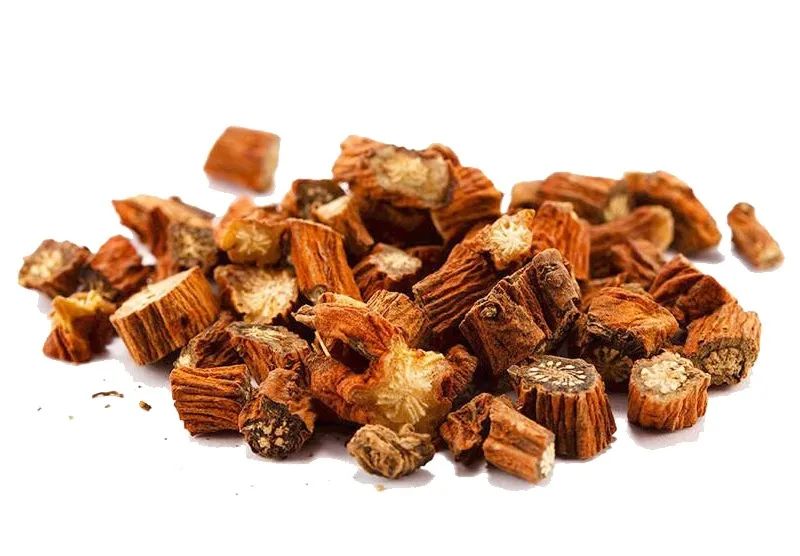
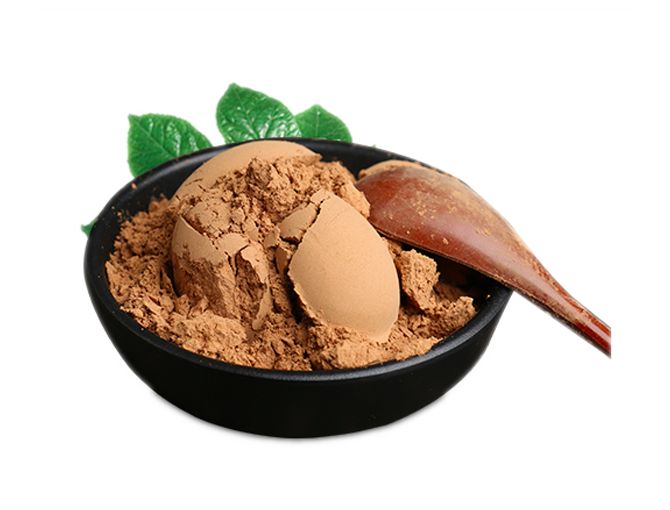
This product is the dried or freeze-dried root and rhizome of the Lamiaceae plant Dan Shen Salvia miltiorrhiza Bge.
[Processing] Remove impurities and residual stems, wash, soak, cut into thick slices, and dry.
Dan Shen Powder is made by grinding clean Dan Shen into fine powder or very fine powder and sieving.
[Characteristics] This product appears as thick slices that are round or oval. The outer skin is reddish-brown or dark brown, rough, with longitudinal wrinkles. The cut surface may have cracks or be slightly smooth and dense, some appearing keratinous, with the bark being reddish-brown, the wood being gray-yellow or purple-brown, with yellow-white radial patterns. The aroma is faint, and the taste is slightly bitter and astringent.
Dan Shen Powder is a reddish-brown powder. The aroma is faint, and the taste is slightly bitter and astringent.
[Examination] Particle size distribution: Take 0.10 g of the very fine powder, add 30 ml of water, ultrasonic treatment for 3 minutes, shaking continuously, and measure according to the wet method under the particle size and distribution determination method, with the characteristic value [d(0.9)] not exceeding 45.0 μm.
[Taste and Properties] Bitter, cool, rough, light, and blunt.
[Functions and Indications] Clears blood heat, dries evil blood, and stops diarrhea. Used for “Bao Ru” heat, pulse heat, liver “Bao Ru”, breast swelling, irregular menstruation, excessive bleeding, heat diarrhea, and heat phlegm.
[Dosage and Administration] 6-10 g, often used in soups, powders, and pills; Dan Shen powder 0.5-1 g, added to prescriptions for use; very fine Dan Shen powder 3-5 g, taken 2-3 times a day, brewed for consumption.
[Prescription Handling] Write Dan Shen in the prescription, dispense Dan Shen or Dan Shen powder; write Dan Shen powder, dispense Dan Shen powder.
[Storage] Store in a dry place; Dan Shen powder should be sealed.
[Note] This product is the same variety as the named medicinal slices in the “Chinese Pharmacopoeia”; Dan Shen powder is the powder of this product. Unless otherwise specified, both comply with the regulations under Dan Shen in the “Chinese Pharmacopoeia”.
The images in this article are sourced from the internet, and the copyright belongs to the original authors. If there is any infringement, please contact the author for deletion.

Unit: Inner Mongolia Mongolian Medicine Engineering Technology Research Institute
Address: No. 4, South Building, Green Food Processing Park, Horqin District, Tongliao City
Phone: 0475-8857776
Website: http://www.myygyy.com/
Scan to follow us

Follow me
Editor: Zhang Wulan, Na Risu
Review: Ao Wuliji

